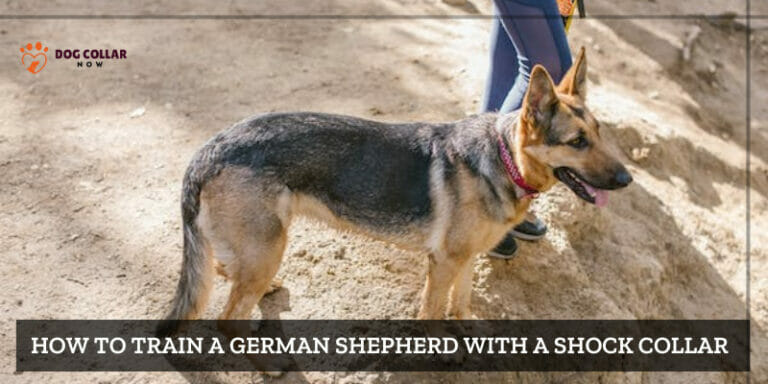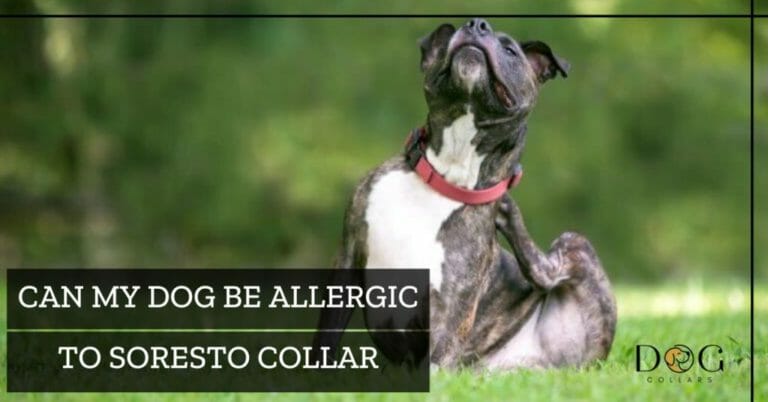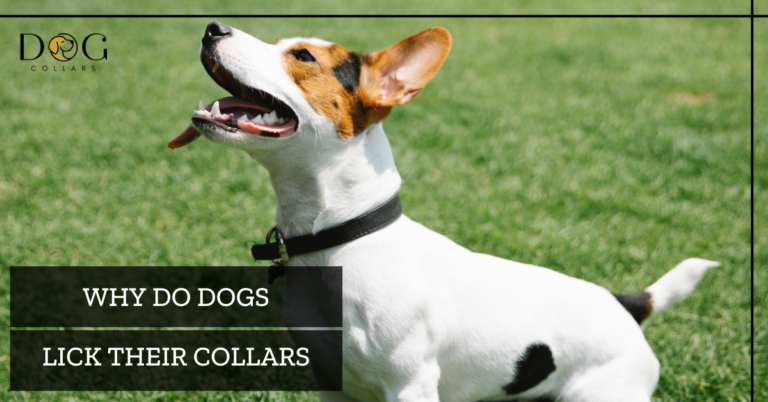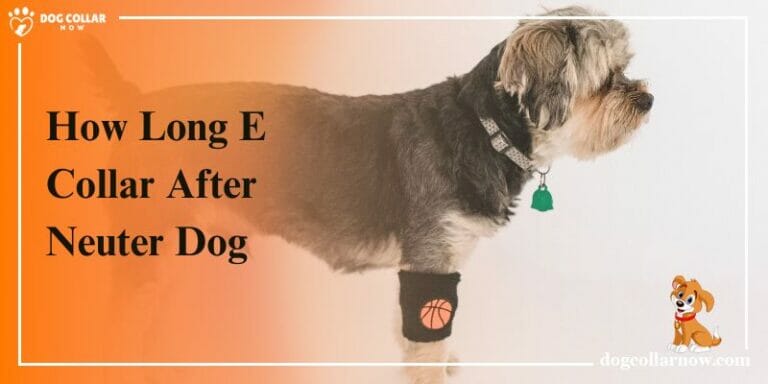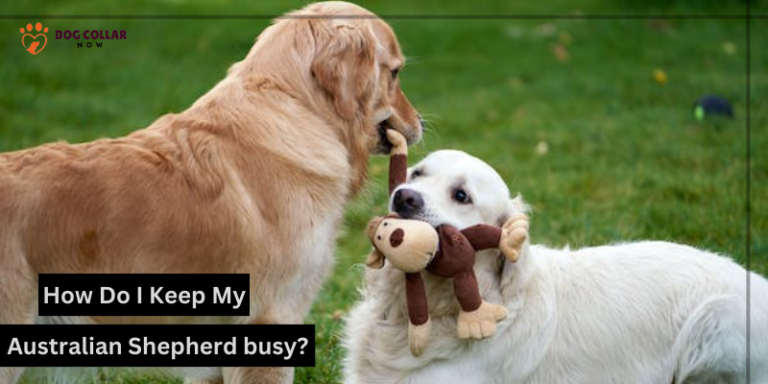Why Do Dogs Wear Big Collars – 6 Main Reasons

In the enchanting world of our four-legged friends, the question “Why Do Dogs Wear Big Collars?” unfolds into a fascinating journey through history, comfort, and protection. These oversized accessories might catch your eye, making our canine friends look like fashion trailblazers. But there’s more to these bold collars than just a trendy statement!
Dogs wear big collars for more than just fashion – they serve various purposes like identification, safety, and training. These substantial accessories are both practical and stylish, reflecting a blend of function and flair.
I’ll uncover the reasons behind this canine fashion trend, explore the history and practicality of big collars, and discover how these accessories can be more than just a fashion statement for our beloved pups.
Why Do Dogs Wear Big Collars – Unveiling The Purpose Behind
Dive into history’s embrace and discover that the tradition of dog’s collar goes way back. In ancient Egypt, collars made of leather or metal were symbols of status and ownership. But today, these neck adornments are more than just identification tags.
Protection And Safety
One prime reason for the big collars is to safeguard our furry friends. These broad, sturdy designs act as shields, buffering around their necks against potential hazards during outdoor escapades.
From unexpected encounters with other animals to unforeseen objects, big collars offer an added layer of defense.
Comfort Meets Style
Comfort isn’t a one-size-fits-all concept, especially for our diverse dog breeds. Dogs with thick necks or heavy coats might find narrow collars restrictive. The roomier fit of big collars ensures comfort, reducing the chances of irritation and discomfort during their everyday activities.
Training and Control
During training sessions, big collars play a crucial role. They offer enhanced control over your dog’s movements, aiding in teaching discipline during walks or exercises.
These sizable accessories also send a visual signal to others, indicating your dog’s need for personal space.
Healing And Recovery
When healing is necessary, big collars step in as heroes. Veterinarians often recommend the Elizabethan collar, colloquially known as “the cone of shame.” These oversized collars prevent dogs from aggravating wounds or injuries, promoting quicker recovery.
Choosing The Perfect Fit
The right collar depends on factors like size, material, and style. Nylon webbing combines durability and lightness, perfect for everyday use. Leather exudes elegance and strength, though it demands a little extra upkeep.
Tailored To Breed
Dogs vary, and so do their collar needs. Smaller breeds might prefer narrower widths for less bulk, while larger counterparts find comfort and support in broader designs.
Whether it’s protection during adventures, comfort for specific breeds, better control during training, or aiding recovery, the big collar serves as a versatile tool in ensuring your dog’s safety, well-being, and style.
Health Benefits Of Wearing A Big Collar For Dogs
Wearing a big collar can actually provide several health benefits for our furry friends. Here are some reasons canines wearing big collars can be beneficial for their overall well-being.
- A big collar can help prevent injuries to your dog’s neck and throat. When walking or playing, dogs may sometimes pull on their leash or engage in rough activities that could strain these sensitive areas. A sturdy and wide collar helps distribute the pressure more evenly, reducing the risk of injury.
- Additionally, certain types of big collars, such as Elizabethan collars, are often recommended by veterinarians after surgeries or medical procedures to prevent dogs from licking or biting at their wounds. This way, it aids in the healing process and prevents further complications.
- Large breed dogs with thick necks require bigger collars for proper support and control during walks. A snug-fitting collar allows the owner to have better control over their pet without causing discomfort or restricting movement.
Wearing a big collar also provides an opportunity to attach identification tags and other accessories like lights or GPS trackers. This ensures that your furry friend is easily identifiable if it ever lost them while exploring outdoors.
Tips For Choosing The Right Collar For Your Dog
1. Consider Your Dog’s Breed And Size: Different breeds have different neck sizes and require specific collar sizes. Make sure to measure your dog’s neck accurately before purchasing a collar.
2. Think About Your Dog’s Activity Level: If you have an active dog that loves to run and play, consider a sturdy, durable collar that can withstand their energy. On the other hand, if you have a small or older dog who doesn’t engage in vigorous activities, a lighter collar may be more suitable.
3. Choose The Right Material: Collars come in various materials such as nylon, leather, or fabric. Each has its own advantages and disadvantages. Nylon is easy to clean and lightweight while leather offers durability and style.
4. Consider Any Specific Needs Or Conditions: Some dogs may require specialty collars due to medical conditions or behavior issues. For example, if your dog tends to pull on walks, using a harness instead of a standard collar might be more comfortable for them.
5. Ensure Proper Fit: A properly fitting collar should allow two fingers to comfortably fit between the collar and your dog’s neck without being too tight or loose.
6. Reflective Elements For Safety: If you often walk your dog during low-light hours, consider getting a collar with reflective strips to enhance visibility and keep both of you safe.
Remember that choosing the right collar is essential for your pet’s comfort and well-being! Take into consideration their unique needs when making this important decision.
The Purpose Of Different-Sized Dog Collars
Different-sized dog collars serve different purposes depending on the needs of individual dogs. When it comes to choosing a collar for your furry friend, considering their breed and specific requirements is crucial.
- Seeing the positive impact of a well-fitted collar on smaller breeds like Chihuahuas, I’ve noticed how my own dog, Bella, thrives with a lightweight, comfortable collar that allows her to move freely. Just like her Chihuahua and Yorkshire Terrier companions, she enjoys unrestricted motion and comfort. For further insights into ideal collar choices for petite breeds.
- On the other hand, larger species such as Great Danes or Saint Bernards require sturdy and wider collars to support their size and strength. These big dogs need a collar that can handle their power without causing discomfort or risk of breakage during walks or training sessions.
- Medium-sized species fall somewhere in between, requiring collars that offer both durability and flexibility. Adjustable collars are often recommended as they can be easily customized to fit snugly around the neck while allowing room for growth.
- It’s important to remember that not all canines wear big collars solely for walking purposes. Some dogs may require specialized types of collars due to medical issues or post-surgery recovery periods. For example, Elizabethan collars (also known as cone-shaped) are commonly used to prevent licking or chewing on wounds after surgery, preventing further injury to your dog.
The purpose of different-sized dog collars is primarily determined by the species, size, and specific needs of each individual canine companion.
By selecting the right collar size and type based on these factors, you can ensure your pet’s safety, comfort, and overall well-being during various activities while keeping them stylish too!
Conclusion
In the world of dogs, collars have a long and fascinating history. From their origins as functional tools to their evolution into stylish accessories, dog collars play an important role in our furry friends’ lives.
These accessories that go beyond fashion hold stories of status in ancient Egypt, safety during outdoor escapades, and tailored comfort for various species. As we’ve uncovered the tapestry of reasons behind these big collars, we invite you to remember that selecting the perfect collar isn’t just about size, it’s about enhancing your beloved companion’s life.
So, next time you see a dog sporting a substantial neck accessory, you’ll know there’s a lot more to it than meets the eye. Happy collaring!
FAQs
Can I use a regular collar on my dog?
Yes, you can use a regular collar on your dog. However, if your dog tends to pull or is prone to slipping out of their collar, a wide collar or a different type of collar, such as a martingale collar or a harness, may be more suitable to ensure their safety.
Are wide collars only for large dogs?
No, wide collars come in a variety of sizes and can be suitable for dogs of all sizes. It is essential to measure your pup’s neck circumference and choose the appropriate width of the collar to ensure a comfortable fit and effective control.
Are wide collars more humane than narrow collars?
Wide collars are considered more humane than narrow collars because they distribute the pressure more evenly, reducing the likelihood of choking or causing discomfort to the dog.
Can I attach a leash to a wide collar?
Yes, you can attach a leash to a wide collar, provided the collar is equipped with a sturdy D-ring. However, if your dog tends to pull or is especially powerful, it is recommended to use a harness or a martingale collar for better control and to minimize strain on their neck.
Are there any risks associated with dogs wearing big collars?
While wearing a properly fitted collar poses minimal risks, it is important to regularly check the collar for any signs of wear or damage.

